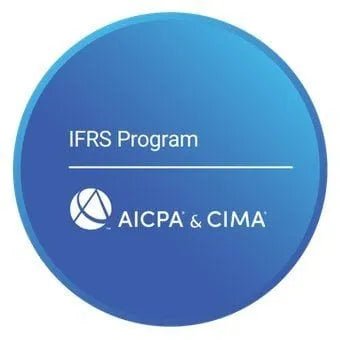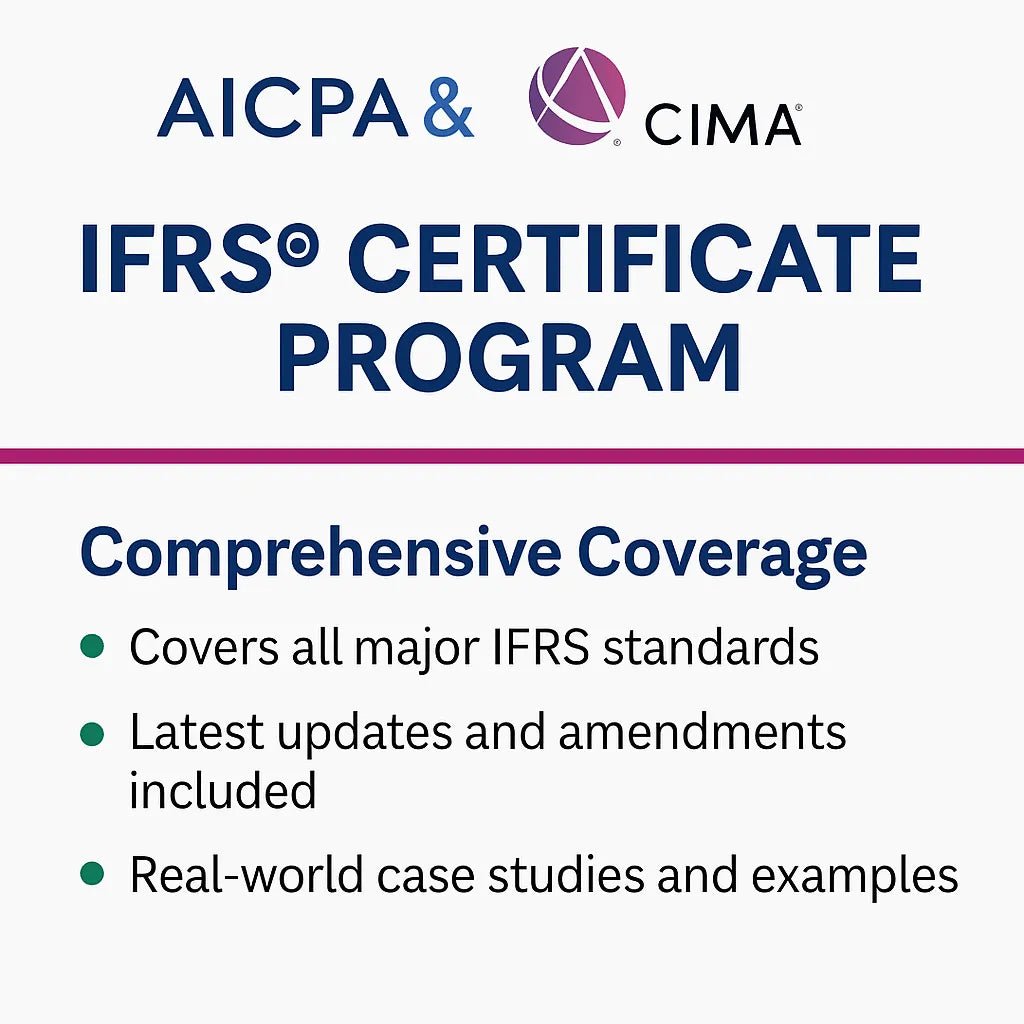IAS 37 Onerous Provision Upside
IAS 37 Onerous Provision Upside: Examples, Calculations, and Disclosures
IAS 37 onerous provision upside is essential for companies handling long-term contracts. According to IAS 37, a contract is considered "onerous" if the cost to complete it is higher than the benefits it’ll bring.
This standard helps companies manage financial risk by making them set aside a provision to cover these potential losses. But sometimes, changes like cost reductions can create an “upside,” lowering the provision. Here’s everything you need to know about IAS 37 onerous provisions: examples, calculations, and disclosures.
Master IFRS with AICPA Certification—Now 70% Off at Eduyush’s India Pricing
What is an IAS 37 Onerous Provision?
Under IAS 37, an onerous contract is a contract where unavoidable costs exceed expected benefits. Unavoidable costs are defined as the lowest of:
- The cost of fulfilling the contract.
- The penalty if the contract is not fulfilled.
If costs rise above expected benefits, a provision for the loss is required.
Example of an Onerous Provision
Imagine a company with a fixed-price contract to construct a building. Due to rising material costs, the project cost now outweighs the revenue from the contract. This contract is now onerous under IAS 37, and the company must record a provision for the anticipated loss.
Get the ACCA Diploma in IFRS with FREE £89 Registration + Live Lectures!
Understanding the “Upside” in an Onerous Provision
Sometimes, conditions change in a way that reduces the loss, creating an upside for the onerous provision. For instance, if costs decrease or the contract terms are renegotiated, the provision can be adjusted downward.
Example of an Onerous Provision Upside
Imagine the construction company finds a cheaper supplier partway through the project, which lowers their overall costs. With these savings, they can reduce the amount they've set aside in their budget, capturing this "upside" from the cost reduction.
Disclosure Requirements for IAS 37 Onerous Provisions
IAS 37 requires detailed disclosures for onerous provisions. Here’s what companies need to include in their financial statements:
-
Description of the Obligation: Explain the nature of the contract and why it is onerous.
- Example: “A provision was recognized for a construction contract due to rising material costs, making the project costs exceed expected revenue.”
-
Expected Timing of Cash Outflows: Indicate when the costs will likely affect cash flow.
- Example: “The provision will impact cash flow within the next 12 months as the project is completed.”
-
Calculation Method and Key Assumptions: Describe how the provision was calculated and the assumptions made.
- Example: “The provision reflects current market prices for materials, with cost assumptions based on recent supplier quotes.”
-
Explanation of the Upside: If the provision is adjusted downward, disclose the reason for the change.
- Example: “The provision was revised after securing a supplier agreement that reduced material costs by 15%.”
Common Scenarios and Examples of IAS 37 Onerous Provisions
Long-Term Supply Contract Example
A company enters into a fixed-price contract to supply goods. If raw material costs spike, the contract may become onerous, requiring a provision. If costs later stabilize, an upside adjustment can be made to lower the provision.
Fixed-Rate Service Contract Example
A consultancy firm signs a three-year service contract with fixed rates. But as labor costs go up, the contract becomes onerous, so they record a provision to cover the expected loss. Later on, they find ways to work more efficiently, which brings costs down. This "upside" lets them reduce the provision, reflecting the savings.
Lease Contract Example
Let’s say a company is stuck leasing office space it doesn’t need and has to sublease it at a loss, making the lease an onerous contract. But if the subtenant later agrees to pay a higher rate, the company can reduce the provision, reflecting this "upside" from the better sublease terms.
Step-by-Step Guide to Calculating and Adjusting an Onerous Provision
Here’s a simple process for calculating and adjusting an onerous provision:
- Calculate Unavoidable Costs: Assess the costs needed to fulfill the contract.
- Estimate Benefits: Estimate the total revenue or benefit expected from the contract.
- Create the Provision: Record the difference as a provision if costs exceed benefits.
- Adjust for Upside: If costs decrease, adjust the provision to reflect the new, lower costs.
Upside Calculation Example
Initial unavoidable cost: $1,000,000
Revised unavoidable cost (after a new supplier agreement): $850,000
Upside Adjustment: $150,000 decrease in the provision
This adjustment positively impacts the income statement by reducing expenses related to onerous provisions.
Required Disclosures for Adjustments Due to Upside
When a provision is adjusted for an upside, IAS 37 requires specific disclosures:
-
Details of the Adjustment: Explain why the provision was reduced (e.g., due to renegotiated contract terms).
- Example: “The provision was adjusted following a renegotiation with suppliers, reducing anticipated material costs by $150,000.”
-
Impact on Financial Position and Income Statement: Describe how the provision change affects financial performance.
- Example: “The provision adjustment improved the gross margin, reducing project-related losses for the reporting period.”
-
Potential Risks and Future Adjustments: Note if any risks or uncertainties may impact the provision again.
- Example: “Future adjustments may be necessary if material costs fluctuate beyond current projections.”
Practical Tips for Managing Onerous Provisions and Upsides
Managing onerous contracts under IAS 37 requires regular assessment of contract costs. Here are some tips:
- Reassess Contracts Regularly: Review contract costs regularly to ensure provisions reflect the most current data.
- Engage in Supplier Negotiations: Renegotiate terms, if possible, to minimize cost and create upside adjustments.
- Stay Updated on IAS 37: Monitor any changes in IAS 37 standards to remain compliant.
Conclusion
The IAS 37 onerous provision "upside" helps businesses manage financial risks in tough contracts, all while meeting disclosure requirements. By providing clear examples and detailed disclosures, companies can be transparent, set realistic expectations for investors, and make smarter financial decisions.
Whether adjusting a provision for reduced costs or reflecting revised contract terms, understanding IAS 37 is essential to managing financial impacts effectively.
FAQs
ACCA blogs
Follow these links to help you prepare for the ACCA exams
IFRS blogs
Follow these blogs to stay updated on IFRS
Formats
Use these formats for day to day operations
- Account closure format
- Insurance claim letter format
- Transfer certification application format
- Resignation acceptance letter format
- School leaving certificate format
- Letter of experience insurance
- Insurance cancellation letter format
- format for Thank you email after an interview
- application for teaching job
- ACCA PER examples
- Leave application for office
- Marketing manager cover letter
- Nursing job cover letter
- Leave letter to class teacher
- leave letter in hindi for fever
- Leave letter for stomach pain
- Leave application in hindi
- Relieving letter format
Interview questions
Link for blogs for various interview questions with answers
- Strategic interview questions
- Accounts payable interview questions
- IFRS interview questions
- CA Articleship interview questions
- AML and KYC interview questions
- Accounts receivable interview questions
- GST interview questions
- ESG Interview questions
- IFRS 17 interview questions
- Concentric Advisors interview questions
- Questions to ask at the end of an interview
- Business Analyst interview questions
- Interview outfits for women
- Why should we hire you question
leave application format
- Leave application for office
- Leave application for school
- Leave application for sick leave
- Leave application for marriage
- leave application for personal reasons
- Maternity leave application
- Leave application for sister marriage
- Casual leave application
- Leave application for 2 days
- Leave application for urgent work
- Application for sick leave to school
- One day leave application
- Half day leave application
- Leave application for fever
- Privilege leave
- Leave letter to school due to stomach pain
- How to write leave letter
Insurance blogs
- Sample letter of appeal for reconsideration of insurance claims
- How to increase insurance agent productivity
- UAE unemployment insurance
- Insurance cancellation letter
- Insurance claim letter format
- Insured closing letter formats
- ACORD cancellation form
- Provision for insurance claim
- Cricket insurance claim
- Insurance to protect lawsuits for business owners
- Certificate holder insurance
- does homeowners insurance cover mold
- sample letter asking for homeowner right to repair for insurance
- Does homeowners insurance cover roof leaks













Leave a comment